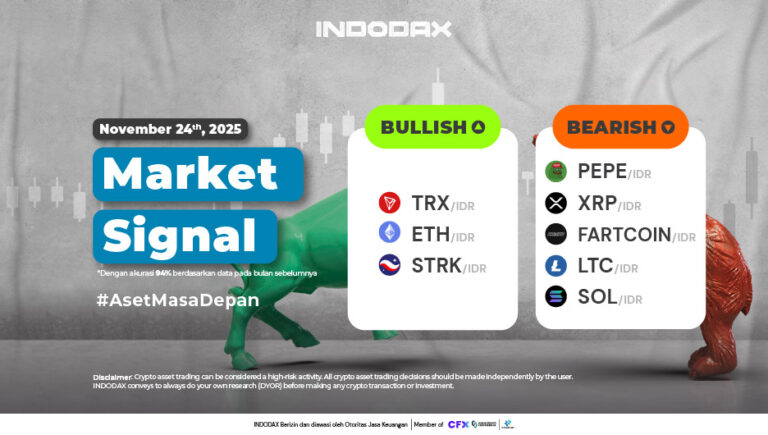To understand financial reports well, it is important to know the terms in the financial sector, including agio and discount.
These two terms, also known as additional paid-in capital, refer to the difference between the selling value and the purchase value of shares in the capital market.
To understand more about what agio is, types, advantages and disadvantages, and the differences with discounts, see the full discussion below.
Also Read: Nvidia Investasi: Nvidia Investment: Technology Stocks with Bright Prospects & Benefits
What is Stock Agio?

Stock Premium vs Stock Discount 2 The Financial Services Authority (OJK) defines stock premium as the excess amount paid by shareholders over the nominal value of the shares after deducting the cost of issuing equity securities. Basically, stock premium can be interpreted as the difference between shareholder deposits and the nominal value of the shares or as a return. So, how do you calculate the stock premium value?
This value is obtained from the difference between the selling price and the purchase price of shares on the capital market. For example, if company A’s shares are sold at a price of IDR 10,000 per share, while the nominal value is IDR 12,000, then the difference of IDR 2,000 is the stock premium.
Generally, stock premium appears when an investor buys shares that have just been issued by the issuer during an initial public offering (IPO).
The profits obtained from this stock premium are usually not subject to tax deductions so that they are net for investors.
Also Read: Dissecting 8 Types of Shares: Which One is Right for You?
Types of Stock Agio
In the capital market world, stock agio is the difference between the nominal price of shares and their selling price on the market. This agio is divided into several types based on how it is obtained. The following is a review of 2 types of stock agio that are commonly found.
1. Ordinary Agio
Ordinary agio is a type of agio that arises from the sale of new shares by a company to investors. The value of this agio is obtained from the difference between the selling price of the shares and their nominal price.
For example, if shares have a nominal value of IDR 6,000 and are sold for IDR 4,000, the difference of IDR 2,000 is called stock agio.
2. Treasury Agio
In addition to ordinary agio, there is also treasury agio. This type of agio comes from the action of buying back shares by the issuing company or what is known as buyback stocks. After being bought back, the shares are sold at a higher price. The value of this treasury agio is calculated from the difference between the resale price of the shares and their nominal price.
For example, shares bought back by the company were successfully sold at a price of IDR 10,000, while the nominal price was IDR 7,000, so the treasury premium obtained was IDR 3,000.
Advantages and Disadvantages of Stock Premium
In the world of finance, stock premium has a major impact on the company. Both as an advantage and a challenge, stock premium plays an important role in determining the financial strength and relationship of the company with its shareholders.
The following is a review of some of the advantages and disadvantages that are important to know.
Advantages of Stock Premium
- Increase company equity: Stock premium is part of the company’s equity that contributes to increasing the company’s financial strength.
- Shows investor confidence in the company’s prospects: High stock premium shows that investors have confidence in the company’s prospects in the future.
- Can be used to cover losses: Stock premium can be used or utilized to cover company losses that may occur in the future.
Disadvantages of Stock Premium
- Burdens the company: Stock premium is considered a company obligation to shareholders. That means, the company must pay it back at a later date.
- Can reduce net profit: Because share premium cannot be distributed as dividends, it can have an impact on reducing the company’s net profit.
What is Stock Discount?
Stock discount is the opposite of stock premium. Discount occurs when the selling price of shares is lower than their nominal value.
For example, if shares are sold for Rp3,000, while the nominal value is Rp5,000, then the difference of Rp2,000 is called stock discount.
Stock discount usually occurs in companies that are forced to expand even though their financial condition is unstable, even at a loss. Therefore, the company is unable to sell shares at a price higher than their nominal value.
Also Read: American stock exchange hours Indonesian time
Example of Stock Premium and Discount Calculation
Understanding examples of stock premium and discount in the investment world can help explain how companies make a profit or face a loss when selling shares. The following is an illustration of the two concepts.
Example of Stock Premium
Company A issues 1,000,000 shares with a nominal price of Rp2,000 per share. This means that the total nominal value of the shares issued is IDR2,000,000,000. (1,000,000 shares x IDR2,000).
However, investors make offers above the nominal price, and the shares are finally sold at a price of IDR3,000 per share. Thus, the company will obtain funds of IDR3 billion (1,000,000 shares x IDR3,000).
The difference between the selling price and the nominal price of the shares is IDR1,000,000,000 (IDR3,000,000,000 – IDR2,000,000,000), which is the share premium. Later, this premium value is recorded as additional paid-in capital in the company’s balance sheet.
Example of Stock Discount
On the other hand, a stock discount occurs when the selling price of shares is lower than their nominal value. For example, Company A initially set the nominal price of shares at IDR500 per share.
However, after experiencing losses in operations, the company was forced to sell its shares below the nominal price, which is IDR 200 per share.
If the company sells 1,000,000 shares at that price, the difference between the selling price and the nominal price is IDR 300,000,000 (IDR 500,000,000 – IDR 200,000,000).
This difference reflects a stock discount of IDR 300,000,000, which shows a loss from selling shares below the nominal value.
Also Read: These are the 5 American Stocks with the Largest Dividends, Must Check!
How to Calculate Stock Agio
In calculating stock agio, you can use the following simple formula:
Stock Agio = Stock Selling Price – Nominal Value of Shares
As an illustration, if a share has a nominal value of IDR 100 and is sold at a price of IDR 120, the resulting stock agio is IDR 20.
Difference between Stock Agio and Stock Discount

Stock premium and stock discount are basically two opposing concepts. Here are the differences between the two that need to be understood.
1. Stock Premium
– Occurs when shares are sold at a price above their nominal value.
– The selling price of the shares is higher than the nominal value.
– Adds capital to the company.
– Example: Shares with a nominal value of $1 are sold for $1.5, so the stock premium is $0.5.
2.Stock Discount
-Occurs when shares are sold at a price below their nominal value.
-The selling price of the shares is lower than the nominal value.
-Reduces the company’s capital.
-Example: Shares with a nominal value of $1 are sold for $0.8 so the stock discount is $0.2
Factors Affecting Stock Premium
In stock issuance, there are a number of factors that affect the amount of stock premium. By recognizing these factors, we can find out how the value of shares above the nominal price is formed.
The following are some factors that play a role in determining stock premium that are important to know:
- Company performance: Companies with solid performance and bright future prospects generally have higher stock premiums because investors see the potential for greater profits.
- Market conditions: Markets that are in a positive trend tend to drive up stock prices, thereby increasing stock premiums.
- Dividend policy: Companies that offer high dividends usually have lower stock premiums because most of the profits have been distributed in the form of dividends.
- Number of shares issued: The more shares issued by a company, the smaller the potential for the premium per share because a larger offering can depress stock prices.
Also Read: Top 7 American Blue Chip Stocks with the Largest Dividends
Conclusion: The Importance of Stock Premiums for Companies and Investors
So, that was an interesting discussion about Stock Premiums vs. Stock Discounts, What’s the Difference? which you can read more about in the Crypto Academy at INDODAX Academy.
In conclusion, stock agio plays an important role in increasing a company’s equity, thus providing an opportunity for the company to raise additional funds without increasing debt.
For investors, stock agio can reflect their confidence in the company’s prospects and potential future profits. However, stock agio also has an impact that needs to be considered.
On the positive side, stock agio can strengthen the company’s financial position and attract more investors. On the other hand, companies must manage investor expectations and ensure that the use of funds from stock agio can provide the expected returns.
By understanding both the benefits and risks of stock agio, companies and investors will be able to make better decisions in their investment strategies.
Let’s Invest in American Stocks at INDODAX
For the latest information, INDODAX will soon launch a new investment option that includes stocks from the United States (US).
With this addition, you can not only invest in crypto assets, but also have the opportunity to manage more than 50 US stocks through one INDODAX account, all of which can be accessed through one application.
FAQ about Stock Premium and Discount
1. What is Stock Premium?
Stock premium is the excess value paid by investors above the nominal value of the stock.
2.What is Stock Discount?
Stock discount is the difference between the selling price of the stock and its nominal value.
3.What is the Difference Between Stock Premium and Discount?
Premium occurs when the selling price of the stock is higher than the nominal value, while discount occurs the other way around.
4.How to Calculate Stock Premium?
Stock premium is calculated by subtracting the nominal value of the stock from its selling price.
5.What Factors Affect Stock Premium?
Company performance, market conditions, dividend policy, and number of shares issued.





 Polkadot 8.92%
Polkadot 8.92%
 BNB 0.44%
BNB 0.44%
 Solana 4.80%
Solana 4.80%
 Ethereum 2.37%
Ethereum 2.37%
 Cardano 1.51%
Cardano 1.51%
 Polygon Ecosystem Token 2.10%
Polygon Ecosystem Token 2.10%
 Tron 2.85%
Tron 2.85%
 Market
Market


